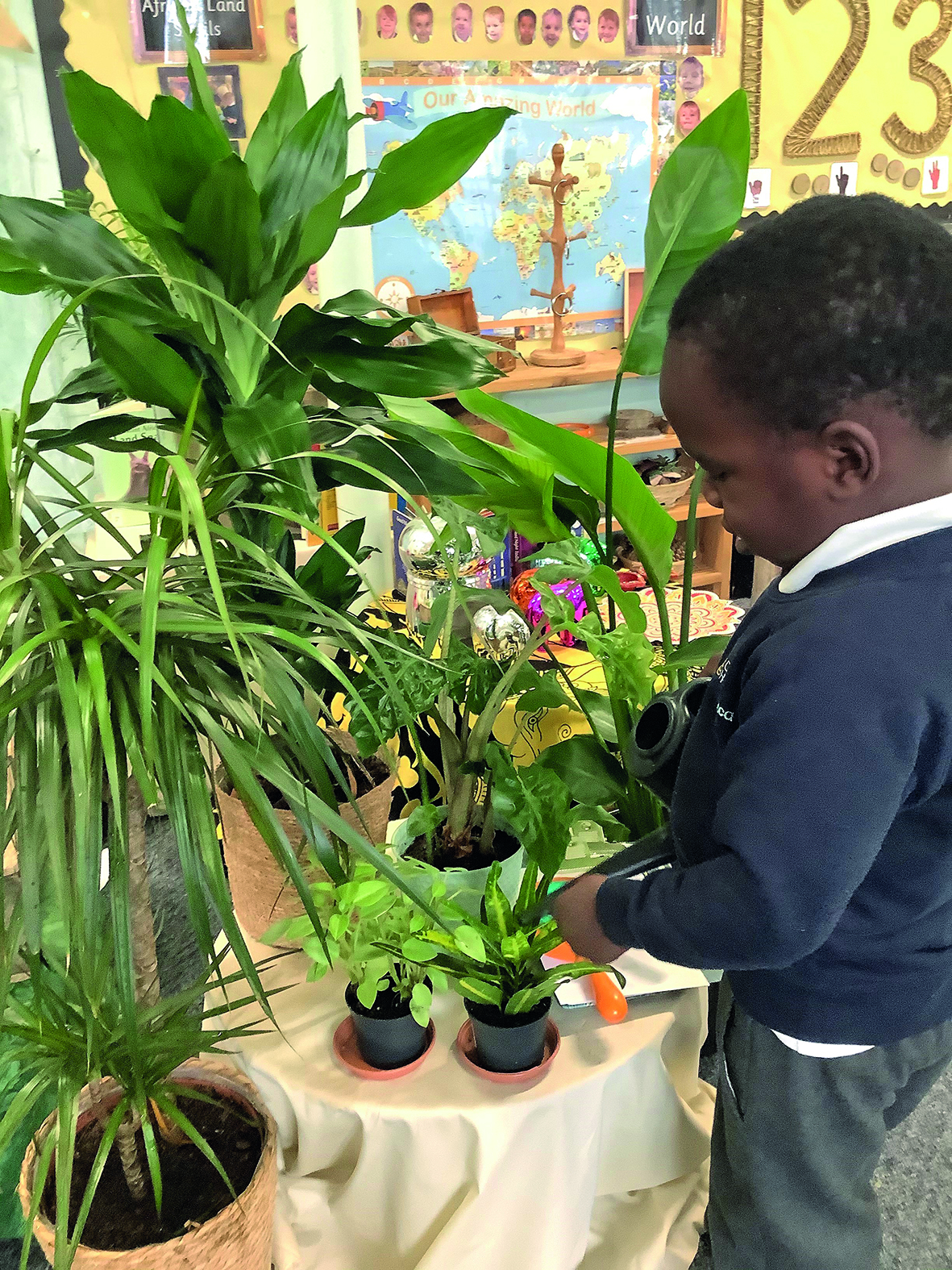
At our nursery we are inspired by many elements of the Reggio Emilia approach, including the concept of bringing aspects of the natural world indoors. Natural objects provide sensory engagement and stimulation and are open-ended. Our plants help children to make connections to the natural world and they contribute to a calm feeling in our learning environment.
The children enjoy caring for our plants and take turns to water them. They use their senses to explore them and comment when they notice changes. Plants are enhancements to some of our activities and add a natural element to tuff spot small-world play. We set up a tray based on First Day at Bug School by Sam Lloyd with soil, sticks, rocks, toy insects, plant pots, seeds and plants. Having this kind of authentic experience of playing with all-natural objects, except the toy insects, can lead to deeper engagement. The children developed their Communication and Language skills, talking about the story as they played. They explored and described many of the natural items.
We sometimes add a plant table which we call our ‘indoor garden’. The table has magnifying glasses, little clipboards and pencils. We also add cameras from time to time so the children can take photos of the plants, which we display. Last year children did lots of growing from seeds with cress and sunflowers. These are added on or around the indoor garden table and prompt lots of discussions.
The children were enjoying the story of Jack and the Beanstalk so we decided to plant beans. Later in the week, the children were excited to see that a ‘giant beanstalk’ had grown from floor to ceiling. This enhancement prompted discussions around how it got there and what might be at the top. Some role-play props were placed at the bottom and children spent time acting out the story collaboratively.
 In September last year, we were given some baby African land snails to take care of as class pets. The babies were so small but we talked about how they will grow a lot bigger and showed photos of what they might end up like. The children have enjoyed watching them grow and regularly check on them. Linked to this, we talked about how the children grow and change and they brought in photos of themselves as babies. We enhance the table that the snail tank is on by having information books like How to Care for Your Giant African Land Snail by Lucie Mann. Even though the wording of many information books are aimed at older children, they can spark the nursery children's inquisitive nature.
In September last year, we were given some baby African land snails to take care of as class pets. The babies were so small but we talked about how they will grow a lot bigger and showed photos of what they might end up like. The children have enjoyed watching them grow and regularly check on them. Linked to this, we talked about how the children grow and change and they brought in photos of themselves as babies. We enhance the table that the snail tank is on by having information books like How to Care for Your Giant African Land Snail by Lucie Mann. Even though the wording of many information books are aimed at older children, they can spark the nursery children's inquisitive nature.
Last summer we purchased the Insect Lore Butterfly Garden, which costs around £20 online. The butterfly garden enhancement provided a first-hand experience that made their learning about the lifecycle of a butterfly more memorable. The children were very excited and interested to observe the changes and stages that occurred as the caterpillars transformed into butterflies. A net was placed on one of our tables along with magnifying glasses, information books and some plastic models showing the stages of the lifecycle of a butterfly. When they had grown, we took the butterflies to our school garden to release them. The children were often heard wondering if they saw our pet butterflies flying by when they were playing outdoors.
Through our growing enhancements, the children are developing in all areas but specifically in the area of Understanding the World, which states in Development Matters that three- and four-year-olds should be learning to:
- plant seeds and care for plants
- understand the key features of the lifecycle of a plant and an animal
- use all their senses in hands-on exploration of natural materials
- talk about what they see, using a wide vocabulary
- begin to understand the need to respect and care for the natural environment and all living things.
Amy Jackson is EYFS specialist leader of education and teacher at Ormiston Herman Academy, Gorleston









